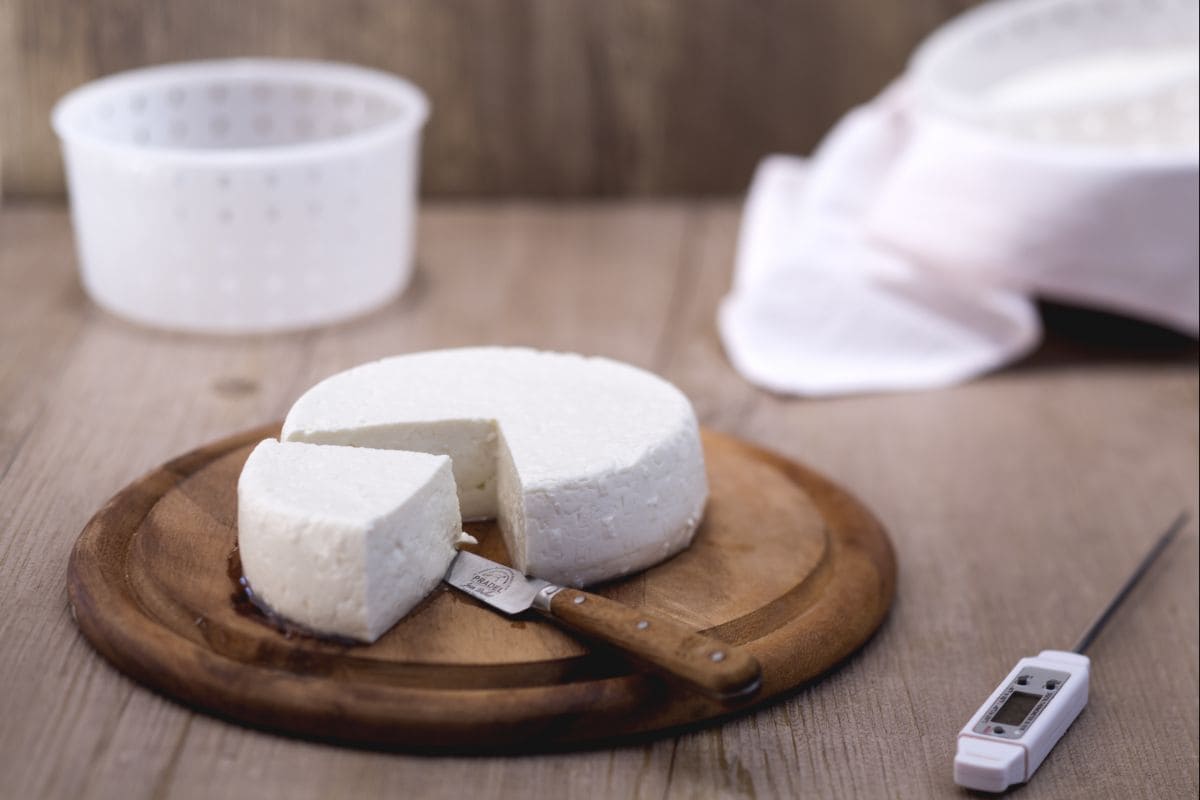Summer couscous with anchovies and primosale
- Easy
- 60 min

Bring a taste of Southern Italy into your kitchen with homemade primosale, a cheese that’s both tender and mild. Really good stuff. This traditional Italian cheese shines when you use the freshest milk, giving it a soft and almost sweet flavor. And listen, in regions like Calabria and Sicily, they take their homemade primosale super seriously. They focus on tiny details like maintaining the milk at the perfect temperature (18-20°C) and using a kitchen thermometer to make sure everything goes smoothly. Adding a bit of yogurt? It introduces a gentle acidity, keeping the cheese fresh. This process demands patience, but it’s more about being attentive and allowing the curds to form naturally. Pretty much like how families in Southern Italy add their personal touches.
So here's the thing, getting started with how to make primosale at home can feel easy once you grasp these tips. I mean, the process seamlessly connects age-old traditions with modern home practices. You know what? You can experiment with modern twists like using kefir for a funkier flavor or try a vegan spreadable version if you prefer plant-based options. However, truthfully, many find the original primosale cheese recipe to be the best because of its fresh and creamy texture—where you can really really taste the care and effort. Unlike aged cheeses, primosale is ready quite quickly, so you won’t have to wait long. Seriously good.
Some folks like to sprinkle a bit of salt or herbs, paying homage to the regional variants across Southern Italy. And look, once you’ve crafted your batch, primosale is perfect on bread or tossed with veggies. It’s an excellent introduction to fresh cheese making—drawing you into the world of real, hands-on food. Even if you’re new to cheese-making, this primosale preparation is straightforward and lets you savor the core of traditional Italian cheese.
You might also like:

To prepare homemade primosale, start by pouring the milk into a pot 1 and let it gradually reach a temperature of 108°F, over medium heat 2, then turn off the heat and add the yogurt 3

stir 4, also add the salt 5 and stir well with the whisk so that it dissolves completely 6.

At this point, let the mixture cool to 100°F 7 and then pour in the rennet 8, stir briefly 9

and cover with a lid 10 letting it rest for 50 minutes 11. After this time, you will notice that the mixture has set, so proceed with the first cut of the curd that has formed. Insert the blade of a rather long knife into the mixture obtained 12,

to make deep vertical incisions 13, then horizontal ones to obtain squares about 1.5 inches per side 14. Wait 10-15 minutes before cutting the squares, previously obtained, in half: this will create smaller squares of approximately 1 inch per side 15.

As before, you will need to cut the squares perpendicularly and let them rest for 15-20 minutes 16 then collect the curd with the molds (the special cheese molds) with a diameter of 5 inches and a depth of 3 inches 17; help yourself by pressing the curd with your hands to remove a good part of the whey 18.

Fill the molds in several steps 19, always pressing with your fingers to remove as much whey as possible 20: with the obtained curd, you will fill 2 molds with a diameter of 5 inches and a height of 3 inches 21. Once filled and well pressed, wait 15 minutes;

then flip the primosale onto your hand 22 and put it back in the mold but on the other side 23. Let it rest for another 15 minutes and then repeat the flipping operation 24. If you notice that the cheese is still soft, let it rest as long as needed to coagulate properly.

Repeat the flipping operation 2 more times including the resting times 25. Finally, cover the molds with film and put them in the refrigerator for at least 2 hours. After the necessary time, when they are firm, you can remove the film 26 and consume the homemade primosale immediately 27.